Mahagauri Devi, the eighth form of Durga, is worshipped on the 8th day of Navratri (Ashtami). Her name means “extremely fair,” and her radiant form is compared to the moon, a conch shell, and the white Kunda flower. Adorned in pure white attire and seated on a bull, Maa Mahagauri radiates purity, compassion, and tranquility.
She carries a trident (trishul) and a damaru, symbolizing divine power and cosmic rhythm, while her other hands bless devotees with fearlessness and boons. Worshipping Mahagauri Mata is believed to cleanse the soul, remove sorrows, and grant peace, prosperity, and liberation. Devotees also honor her as a compassionate mother who forgives sins, removes obstacles, and guides them toward purity and spiritual awakening.
The significance of 8th day of Navratri is immense, as it is dedicated to Mahagauri Devi, making it one of the most auspicious days of the festival. Rituals like Mahagauri puja vidhi, fasting, chanting of Mahagauri mantra, and offering Mahagauri bhog are performed with devotion. She is worshipped as the goddess who fulfills desires, blesses devotees with harmony in marriage, and leads them on the path to self-realization.
Who is Mahagauri Devi?
Mahagauri Devi is revered as the eighth manifestation of Goddess Durga, worshipped on the eighth day of Navratri (Durga Ashtami). She embodies purity, serenity, and forgiveness, guiding her devotees toward liberation and spiritual awakening. In the divine lineage, Mahagauri Mata is considered another form of Parvati, the consort of Lord Shiva, and the mother of Lord Ganesha and Lord Kartikeya.
Her name “Mahagauri” means extremely fair, symbolizing her radiant beauty and spotless purity. She is described as being as luminous as the conch, moon, and Kunda flower, representing the highest level of inner cleansing and divinity.
In iconography, Mata Mahagauri is depicted riding a bull (her vahana), dressed in white garments, and adorned with ornaments. She carries a trident (trishul) and a damaru, while her two other hands are in Abhaya mudra (removing fear) and varada mudra (granting blessings). This form represents her role as a nurturer, protector, and liberator of devotees.
Worship of Mahagauri Maa during Navratri is believed to remove sins, grant blessings of prosperity, and bring peace and harmony into life. Her presence signifies the power of devotion, the cleansing of karma, and the triumph of goodness over hardship.
Significance of Mahagauri Devi
The significance of Mahagauri Devi lies in her role as the Navratri 8th day goddess, worshipped on Durga Ashtami. She represents purity, forgiveness, and transformation. Devotees believe that worshipping Maa Mahagauri on this day purifies the soul, removes past sins, and helps attain peace, prosperity, and liberation.
Spiritual Importance
Mahagauri Mata is considered the goddess of compassion and serenity. Her blessings help devotees overcome negative karma, dissolve sorrows, and achieve clarity of mind. She teaches that purity in thought, speech, and action is the key to spiritual elevation. Worshipping her strengthens devotion, removes obstacles, and leads to moksha (liberation).
Navratri Ashtami Worship
On the eighth day of Navratri, devotees perform Mahagauri puja vidhi, chant Mahagauri mantras, and offer Mahagauri bhog such as coconut, kheer, and white flowers. In North India, Kanjak Puja is observed, where young girls are worshipped as forms of the goddess. In Gujarat, people celebrate with Garba, while in Maharashtra, Ramayana recitations take place. In West Bengal, Devi Mahagauri is worshipped with grandeur as part of Durga Puja.
Transformative Power
The story of Mahagauri emphasizes transformation through devotion. Her radiant white form after penance symbolizes cleansing of impurities and renewal of the soul. This makes her worship especially significant for those seeking spiritual progress, marital harmony, and removal of obstacles.
Thus, the Maa Mahagauri significance during Navratri is not only about rituals but also about inner purification, resilience, and embracing a path of peace and forgiveness.
Iconography & Symbolism of Mahagauri Devi
The iconography of Mahagauri Devi, the eighth form of Durga, reflects purity, serenity, and spiritual elevation. Every element of her depiction carries deep symbolism, inspiring devotees to follow a life of virtue and devotion.
Appearance
Maa Mahagauri is described as being as fair as the conch, the moon, and the Kunda flower. She is adorned in dazzling white clothes, radiating calmness and divinity. Her serene face symbolizes compassion, forgiveness, and the removal of fear.
Attributes
- Four Arms: She holds a trident (trishul) in one hand, signifying the destruction of evil and karmic impurities. Another hand carries a damaru, symbolizing the cosmic rhythm of creation. Her other two hands are in abhaya mudra (dispelling fear) and varada mudra (granting blessings).
- Vehicle (Vahana): Mahagauri Mata rides a bull, which represents purity, determination, and strength.
- Color White: Her white attire and ornaments emphasize purity, peace, and transcendence from worldly attachments.
Symbolism
The trident represents dissolution of karmas across time- past, present, and future.
The damaru embodies the eternal sound of the universe, the origin of creation.
Her abhaya mudra assures devotees of protection from negativity and fear.
The varada mudra blesses devotees with prosperity, harmony, and liberation.
Temples and idols of Mahagauri Mata are often crafted in white marble, reinforcing her divine purity. In worship, her symbolism inspires devotees to embrace forgiveness, inner cleansing, and spiritual awakening.
Origin of Mahagauri Devi
The origin of Mahagauri Devi is rooted in the story of Parvati Mata, who undertook severe penance in the Himalayas to gain Lord Shiva as her consort. During this intense tapasya, her body was covered with dust and her complexion darkened due to hardship. Yet, her devotion remained unshaken.
Pleased by her dedication, Lord Shiva accepted her penance and bathed her in the sacred waters of the Ganga. This divine act transformed her into a luminous, radiant goddess with a complexion as fair as the moon. From this moment, she came to be worshipped as Mahagauri Mata, meaning “extremely fair and pure.”
Connection with Shumbha and Nishumbha
According to the Devi Mahatmya and Shiva Purana, when Parvati bathed in the Ganga, her dark skin separated from her body and manifested as Kaushiki Devi, a fierce form who later defeated the demons Shumbha and Nishumbha. After these cosmic battles, Parvati returned to her serene form as Mahagauri Devi, representing compassion, purity, and peace.
Scriptural References
The Mahagauri story is mentioned in the Markandeya Purana, Shiva Purana, and even connected with episodes from the Ramayana. Each version highlights her transformation as symbolic of spiritual purification, where penance and devotion lead to ultimate grace and liberation.
Through this story, Maa Mahagauri is worshipped as the remover of sins, the liberator of devotees from suffering, and the divine mother who blesses with prosperity, harmony, and spiritual awakening.
Legends and Stories of Mahagauri Devi
The stories of Mahagauri Devi, the 8th day Navratri goddess, reveal her power of transformation, her role in cosmic battles, and her boundless compassion. These legends are celebrated during Durga Ashtami, when devotees remember her as the remover of sins and the bringer of peace.
Penance in the Himalayas
The Mahagauri ki katha begins with Parvati’s determination to unite with Lord Shiva. She undertook severe austerities in the Himalayas, facing extreme hardships. Her body was covered in dust and her complexion turned dark, but her devotion never wavered. Lord Shiva, moved by her penance, purified her with the waters of the Ganga, and she emerged as Maha Gauri Mata, radiant and pure. This symbolizes how perseverance and devotion can lead to divine transformation.
The Legend of Shumbha and Nishumbha
Another Mahagauri ki kahani describes how her dark complexion manifested into Kaushiki Devi after bathing in the Ganga. Kaushiki played a vital role in slaying the demons Shumbha and Nishumbha, restoring cosmic balance. Once the demons were destroyed, Parvati returned to her serene and compassionate form as Mahagauri Mata, embodying peace and forgiveness.
Return to Peace and Purity
After the battles of Durga’s fierce forms- Chandi, Chamunda, Kali, and Kaushiki- the goddess resumed her gentle form as Mahagauri Maa. This transition shows the balance between ferocity and compassion in the divine feminine, teaching that after every trial and struggle, peace and purity follow.
Symbolic Meaning of the Stories
The story of Mahagauri Devi emphasizes that devotion and penance can purify the soul, leading to liberation. Her legends inspire devotees to face adversity with resilience, forgive with compassion, and embrace transformation as a path to spiritual progress.
Spiritual Lessons from Mahagauri Devi
The worship and stories of Mahagauri Devi offer timeless spiritual wisdom. As the Navratri day 8 goddess, she inspires devotees to live with purity, resilience, and compassion.
Purity as a Path to Liberation
Maa Mahagauri teaches that a pure mind, heart, and soul are essential for spiritual growth. Her transformation from hardship to radiance shows that devotion and penance cleanse karmic impurities, leading to enlightenment.
Resilience in Adversity
The Mahagauri ki katha of her penance in the Himalayas highlights the power of determination. Despite difficulties, she never abandoned her goal. This lesson inspires devotees to face life’s challenges with courage and patience, knowing divine grace follows perseverance.
Transformation and Renewal
By manifesting as Kaushiki to defeat Shumbha and Nishumbha, and later returning as Mahagauri Mata, she represents the cycle of transformation. She teaches that even in the darkest moments, one can rise renewed, pure, and filled with divine strength.
Compassion and Forgiveness
Devi Mahagauri embodies kindness and forgiveness. Her blessings encourage devotees to let go of anger, jealousy, and resentment, replacing them with harmony, peace, and empathy.
Spiritual Path of Devotion
Worship of Mahagauri Mata during Navratri- through Mahagauri puja vidhi, fasting, chanting of Mahagauri mantras, and offering Mahagauri bhog- reminds devotees that devotion and humility are the keys to liberation.
Through her life and lessons, Mahagauri Devi inspires inner cleansing, moral strength, and the pursuit of divine wisdom.
Puja Vidhi at Home for Mahagauri Devi
Performing Mahagauri puja on the 8th day of Navratri (Durga Ashtami) is considered highly auspicious. The rituals, or Mahagauri puja vidhi, help devotees cleanse their mind and soul, remove sins, and seek blessings of peace, prosperity, and liberation.
Required Materials for Mahagauri Puja
- Idol or image of Maa Mahagauri
- Clean red or white cloth for altar decoration
- Clay pan or plate with three layers of mud
- Sapta Dhanya or Navadhanya (seven or nine types of grains)
- Kalash (sacred pot) filled with water
- Betel nut, coins, raw rice mixed with turmeric, durva grass
- Five mango leaves and a coconut
- Incense sticks, lamp (diya), and camphor
- Fresh flowers, especially jasmine or night-blooming jasmine
- Kumkum and sandalwood paste
- Fruits, sweets, and coconut
- Panchamrit (mixture of milk, curd, honey, ghee, and sugar)
- Prasad items like black gram and rava halwa
Step-by-Step Puja Procedure
- Bathe early in the morning and wear white or red clothes.
- Purify the puja area and sprinkle holy water.
- Place the idol or image of Mahagauri Mata on a decorated altar.
- Prepare the clay pan with soil, sprinkle water, and sow Sapta Dhanya/Navadhanya seeds.
- Set up the Kalash with water, coins, betel nut, and mango leaves, and place a coconut on top.
- Light a lamp and incense sticks.
- Offer kumkum, sandalwood paste, flowers, and a white or red chunri to the goddess.
- Present offerings like fruits, sweets, coconut, and Mahagauri bhog (kheer, coconut, or white-colored foods).
- Perform Sankalpa (state your intention or prayer).
- Chant Mahagauri mantras or recite Durga Chalisa/Devi Stotra.
- Perform aarti with the lamp, ringing bells, and blowing the conch.
- Distribute prasad and seek blessings.
Chanting and Aarti
Begin the puja with the Mahagauri beej mantra:
Om Hreem Shreem Glaum Gam Gauri Geem Namah
Then recite the Mahagauri dhyana mantra:
During aarti, sing the Mahagauri stuti or aarti, wave the lamp in circles, and conclude with gratitude for her blessings.
Mantras Dedicated to Mahagauri Devi
Chanting the Mahagauri mantra on the 8th day of Navratri is believed to bring peace, purity, prosperity, and liberation. Devotees recite these mantras with devotion during Mahagauri puja to seek her divine blessings.
Maha Gauri Dhyana Mantra
Meaning: O Goddess who resides in all beings as Mahagauri Mata, I bow to you again and again.
Benefits: This Mahagauri Devi mantra invokes the goddess’s divine presence, bringing clarity, peace, and spiritual elevation.
Maa Mahagauri Beej Mantra
Om Hreem Shreem Glaum Gam Gauri Geem Namah
Meaning: Salutations to the luminous and auspicious Maa Mahagauri.
Benefits: This is considered the Mahagauri beej mantra, which purifies the soul, removes sorrow, and grants harmony in life. It is especially powerful as a Mahagauri mantra for marriage, believed to bless devotees with love, family happiness, and stability.
Mahagauri Jaap Mantra
Devotees often perform Mahagauri jaap mantra 108 or 1008 times during Ashtami. Reciting either in Hindi or English (Mahagauri mantra in Hindi / Mahagauri mantra in English) removes sins, fulfils desires, and attracts peace and prosperity.
Mahagauri Stotra and Stuti
Apart from mantras, devotees recite the Mahagauri stotra and Mahagauri stuti. These hymns praise the goddess as the Navratri 8th day goddess, glorifying her radiance, forgiveness, and protective power.
Regular chanting of Mata Mahagauri mantra not only grants spiritual awakening but also brings worldly success, marital harmony, and protection from negativity.
Benefits of Worshipping Mahagauri Devi
Worshipping Mahagauri Devi, the Navratri 8th day goddess, is believed to bring purity, prosperity, and spiritual awakening. Her blessings remove sins, dissolve past karmas, and guide devotees toward peace and liberation.
Spiritual Benefits
- Purification of the soul- Devotees who perform Mahagauri puja vidhi experience inner cleansing and liberation from negative karma.
- Spiritual growth- Chanting the Mahagauri mantra or Mahagauri stotra brings enlightenment, wisdom, and clarity.
- Liberation (Moksha)- The goddess blesses her followers with freedom from the cycle of birth and death.
Mental & Emotional Benefits
- Peace and serenity- Worshipping Maa Mahagauri calms the mind and reduces stress.
- Emotional healing- Her grace helps devotees release resentment, jealousy, and negativity.
- Resilience and clarity- Reciting the Mahagauri jaap mantra strengthens focus and brings confidence.
Material Benefits
- Prosperity and abundance- Offering Mahagauri bhog such as kheer, coconut, and white flowers attracts wealth and success.
- Marriage blessings- The Mahagauri mantra for marriage is especially powerful for devotees seeking harmony and happiness in their relationships.
- Protection from negativity- Worshipping Mahagauri Mata ensures safety from evil influences and obstacles in life.
In essence, the benefits of worshipping Mahagauri Mata include:
- Purification of mind, body, and soul
- Removal of obstacles and sorrows
- Spiritual wisdom and self-realization
- Prosperity, harmony, and family happiness
- Protection and fearlessness
- Fulfilment of desires and blessings for marriage
Temples Dedicated to Mahagauri Devi
Temples of Mahagauri Mata are important spiritual centers where devotees gather to seek blessings, especially during Navratri Ashtami. These shrines celebrate her as the embodiment of purity, serenity, and divine compassion.
Major Temples of Mahagauri Devi
- Shri Mahagauri Mata Mandir, Ludhiana (Punjab) – This temple is considered one of the Shakti Peethas and attracts thousands of devotees, especially on the 8th day of Navratri.
- Mahagauri Mandir, Varanasi (Uttar Pradesh) – Located near the Annapurna Temple in Vishwanath Gali, it is known for its peaceful atmosphere and daily annadanam (food distribution).
- Devi Mahagauri Temple, Haridwar (Uttarakhand) – Situated on Bilwa Parvat, this ancient temple is a major pilgrimage spot and part of the revered Shakti Peeths.
- Mahagauri Mata Temple, Ujjain (Madhya Pradesh) – Known for its spiritual significance and historic architecture.
- Mahagauri Temple, Patan (Gujarat) – A famous shrine where devotees offer special Mahagauri bhog during Navratri.
- Mahagauri Temple, Pushkar (Rajasthan) – Another sacred site celebrated for its beauty and devotion.
Festivals and Celebrations
During Navratri, these temples are decorated with flowers and lights. Rituals such as Mahagauri pujan, Kanya Puja, fasting, and chanting of Mahagauri mantra in Hindi or English are performed with devotion. Cultural programs, devotional singing, and Durga Chalisa recitations also take place.
Presence of Mahagauri Devi in Other Traditions
The influence of Mahagauri Devi, one of the Navdurga forms, extends beyond mainstream Hinduism and finds resonance in other Indian and Southeast Asian traditions. Her qualities of purity, protection, and transformation are echoed in different faiths and cultures.
In Buddhism
In Vajrayana Buddhism, several Hindu goddesses, including forms of Durga, were assimilated into the Buddhist pantheon. Goddesses such as Tara and Vajrayogini embody qualities similar to Maa Mahagauri. Tara, particularly in her form as Durgottarini-Tara, mirrors Durga’s role as a savior and is also depicted riding a lion, just like Mahagauri Mata. In Nepalese Buddhism, Vajrayogini is worshipped during festivals similar to Navratri, reflecting the deep cultural overlap.
In Jainism
In Jain tradition, the goddess is reflected in Sacciya Mata, who appears in Jain temples and art. Though not depicted as slaying demons, she is shown as a peaceful deity with a lion mount, resonating with the imagery of Devi Mahagauri as a protector and nurturer.
In Southeast Asia
Archaeological finds in Indonesia, Cambodia, and Vietnam highlight worship of Durga and her forms. Sculptures show Durga standing over the buffalo demon or riding a lion, while local adaptations portray her in unique artistic styles. These representations emphasize her power, purity, and divine feminine energy- qualities that mirror the symbolism of Mahagauri Devi.
Universal Symbolism
In comparative mythology, Mahagauri Maa represents universal archetypes of the divine feminine- purity, forgiveness, and transformation. Similar to yin-yang in Taoism or the protective goddesses in Greco-Roman culture, Mahagauri Mata embodies balance, compassion, and renewal.
Her presence across traditions underscores that the significance of the 8th day of Navratri is not just ritualistic but also symbolic of a deeper truth- that purity, resilience, and compassion are universal paths to liberation.
Rudra Centre’s Mahagauri Products & Puja Services
To honour Mahagauri Devi, Rudra Centre offers authentic products and puja services that help devotees connect with her divine energy on the 8th day of Navratri (Durga Ashtami). These rituals and sacred items are prepared with Vedic precision to bring peace, prosperity, and spiritual growth.
9 Mukhi Rudraksha
A sacred bead ruled by Goddess Durga, embodying the combined power of all nine forms of Durga including Maa Mahagauri. Wearing it brings courage, fearlessness, protection, spiritual elevation, and success in worldly life.
Click on the link to buy 9 Mukhi Rudraksha from Rudra Centre.
Navdurga Idols in Marble
A set of nine beautifully crafted white marble idols representing the Navdurga, including Mahagauri Mata. Ideal for temples and home altars, these idols enhance spiritual ambiance and bring blessings of harmony and abundance.
Click on the link to buy Navdurga Marble Idols from Rudra Centre.
Mahagauri Mata Puja
A dedicated Vedic ritual for Mahagauri Devi, performed by expert priests on your behalf, especially auspicious on Ashtami during Navratri. It includes Durga Saptashati recitation, Gauri Astottara Satanamavali, mantra japa, homa, aarti, and prasad delivery.
Click on the link to book Mahagauri Mata Puja from Rudra Centre.
Nav Durga Puja and Yagya
A comprehensive puja invoking all nine forms of Durga, including Mahagauri Devi, for protection, removal of negativity, and spiritual growth. Energized items and prasad are sent to participants after the rituals.
Click on the link to book Nav Durga Puja and Yagya from Rudra Centre.
Navratri Mahapuja
A grand group Vedic puja performed during Navratri, with special rituals for Maa Mahagauri on the 8th day. This includes live streaming, personalized sankalpa, and sharing of ritual photos and videos.
Click on the link to book Navratri Mahapuja from Rudra Centre.


-in-Astrology.jpg)
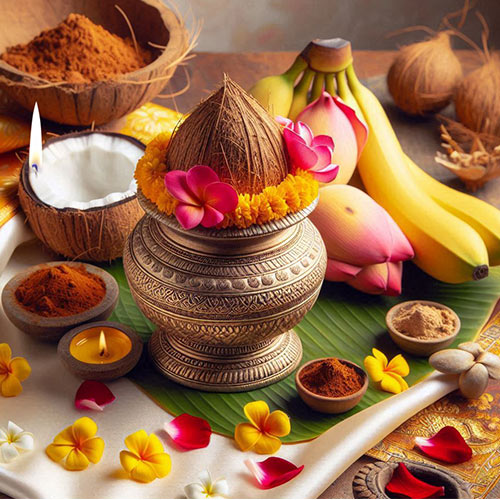
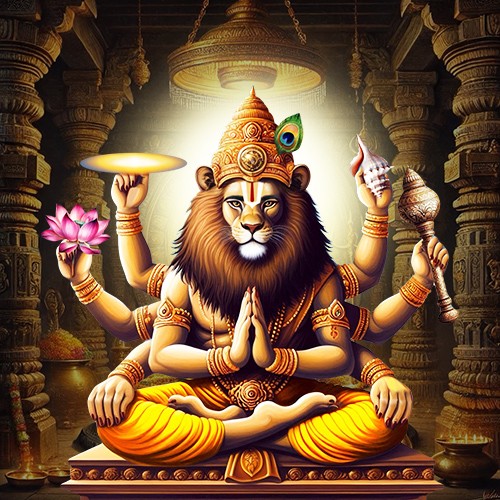
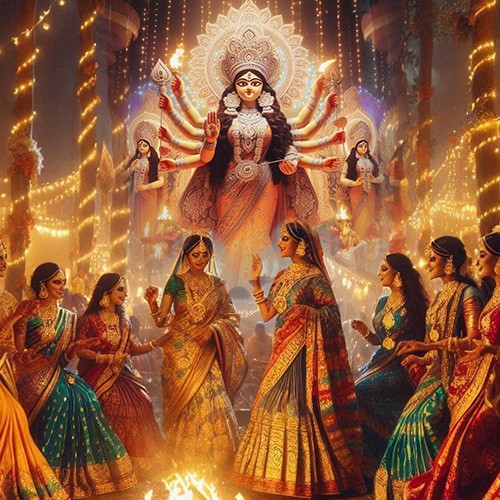
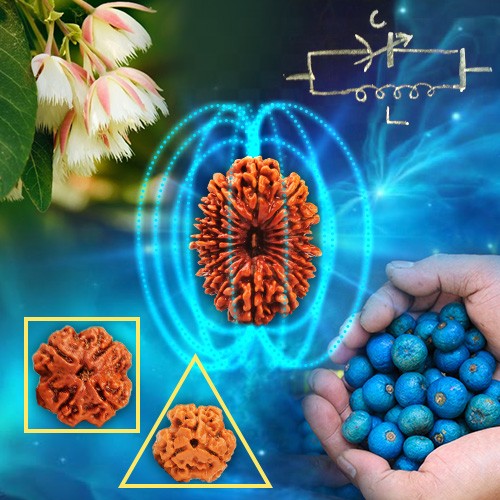

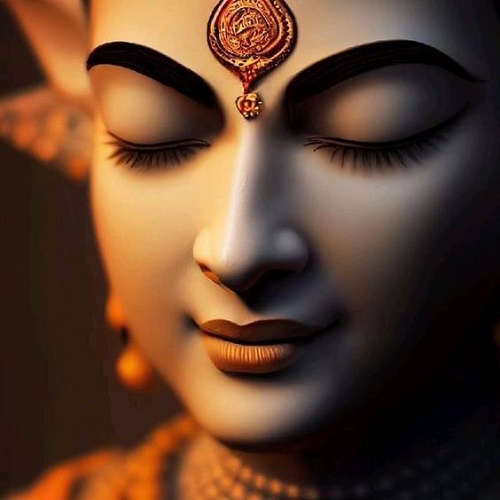
.jpg)
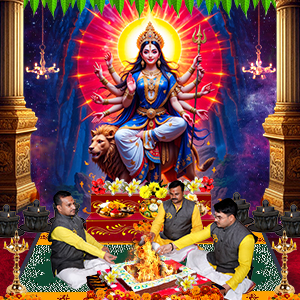
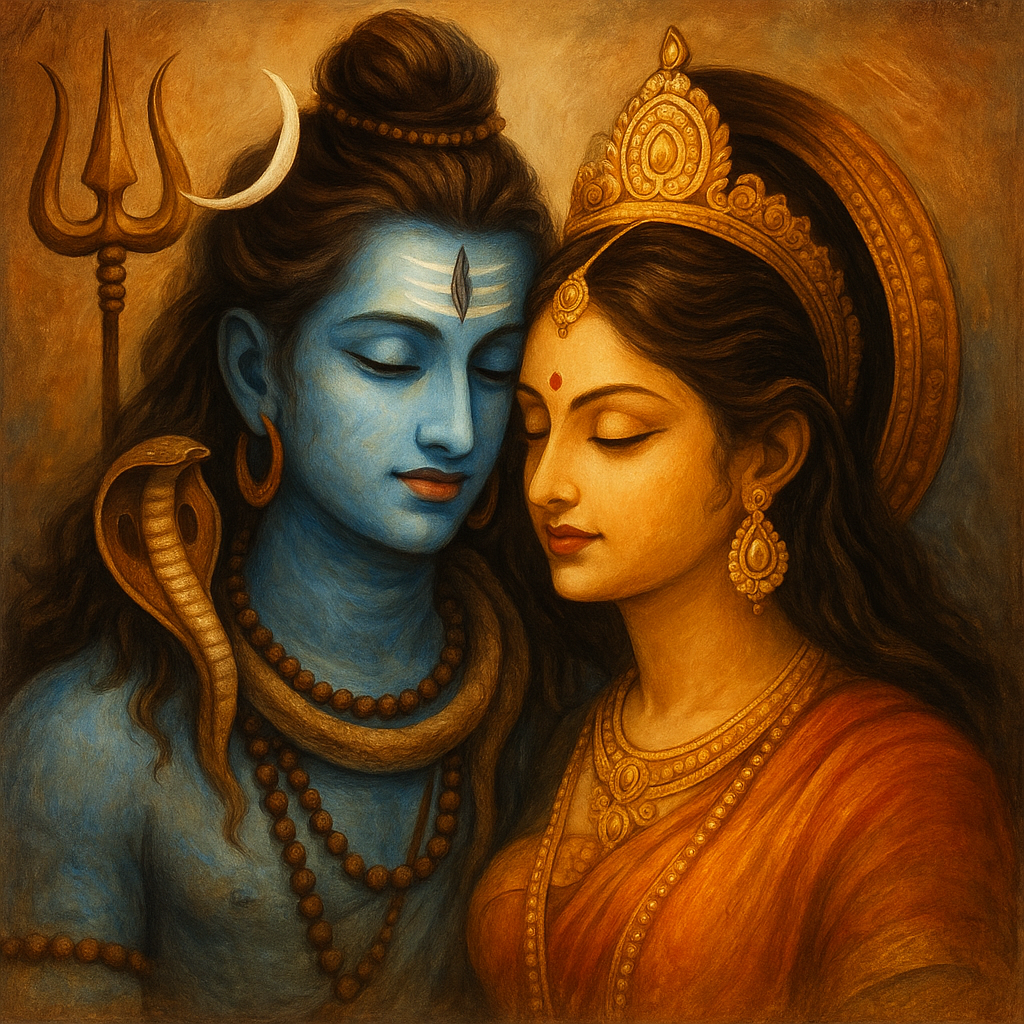
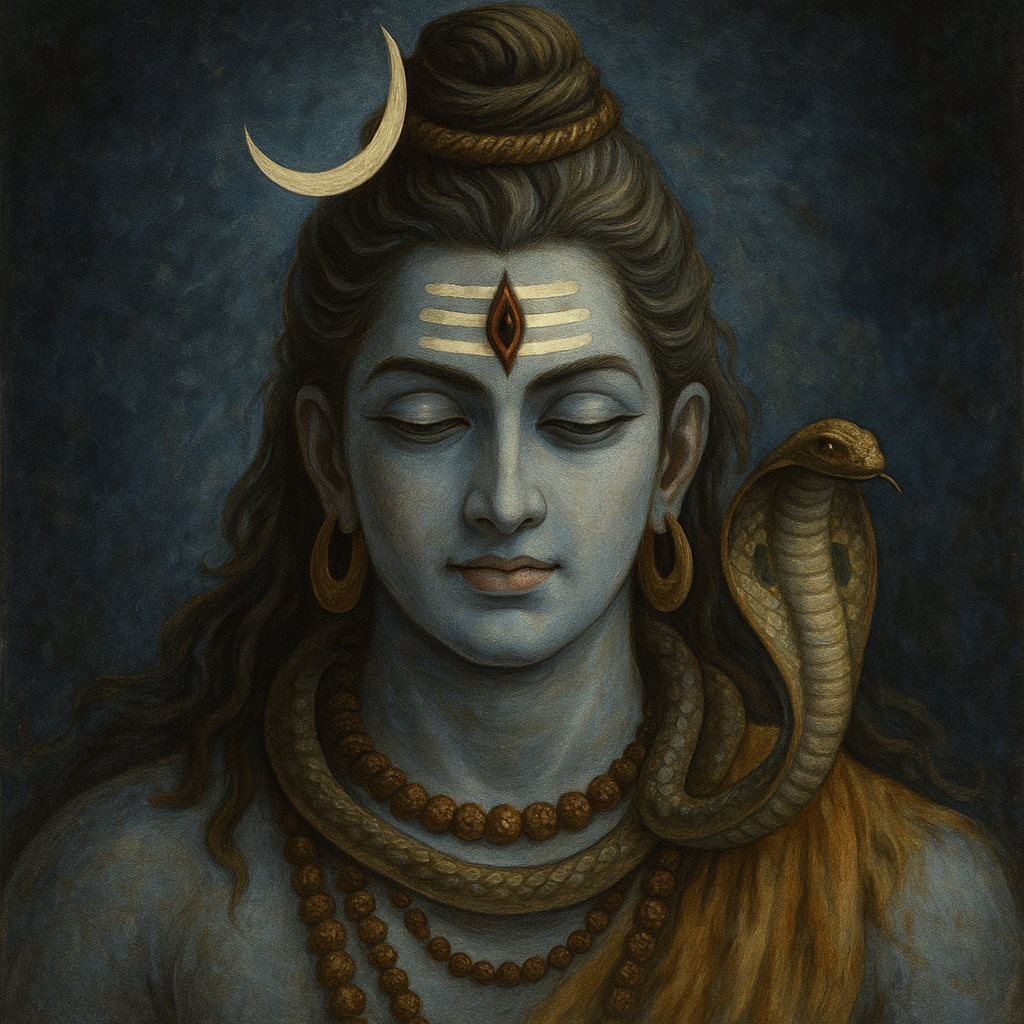
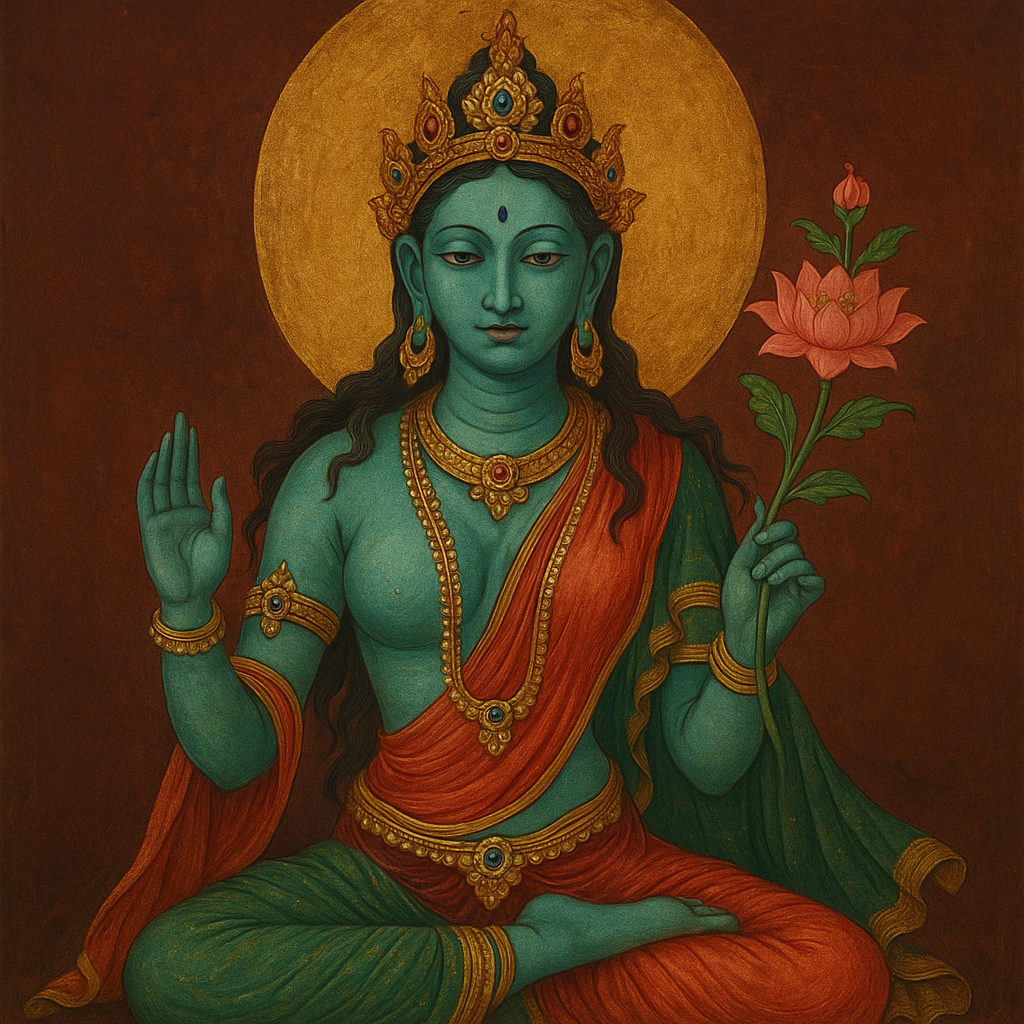
Comments 0
Leave your thought here